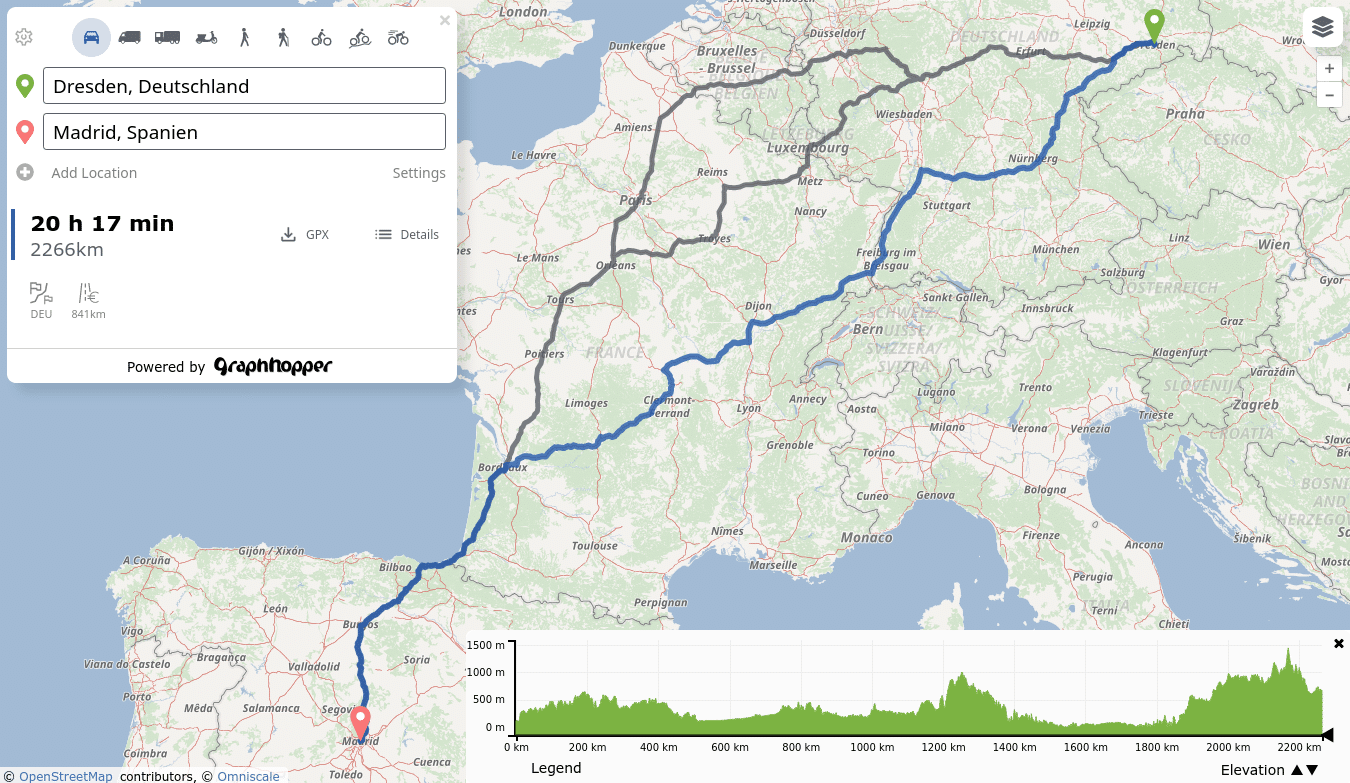A route planner user interface for the GraphHopper routing engine released under the Apache License 2.0.
There is an experimental navi branch that implements turn-by-turn navigation
directly in the browser.
- Clone this repository.
- Make sure node and npm are installed. We recommend using the iron LTS (node v20.14.0 and npm 10.7.0).
- npm install
- npm run serve
- Open your browser at http://0.0.0.0:3000/.
- Start development. The browser will update automatically when you change the code.
- Format the code and run the tests using
npm run formatandnpm run test. - Fork the repository and create a pull request. Contributions are welcome. Feel free to discuss your changes in our forum or the GitHub issues.
- You can build the production bundle using
npm run build. - If you use the Directions API edit the config to show profile icons properly (see 'Advanced configuration' section below).
GraphHopper Maps is translated into many languages and you can help improve GraphHopper by adding or improving your language! See this spreadsheet to create a new or improve an existing language. Let us know if you changed something or submit a pull request with your changes after the following steps:
- Edit the spreadsheet
- Run
python update-translations.py - Review your changes via e.g. http://localhost:3000/?locale=en and with
git diff. Make sure that is the only one withgit status.
Please note that the translations for the server-side turn instructions are located in a different repository.
You can point the app to a different url, like a local GraphHopper server,
set your own API keys for the different map tile providers and more in the config.js file. For such changes it is
best to create a copy of this file called config-local.js which will be ignored by git.
Every branch of this repository can be tested at https://graphhopper.com/maps-dev/<branch_name>/
This project uses
- the great OpenLayers library.
- the codemirror code editor for the custom model editor.
- many icons from Google's open source font library.
- many more open source projects - see the package.json


